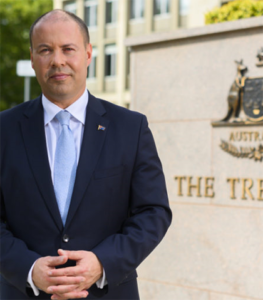Federal Budget 2018-19 – the good, the bad and the ugly
Just weeks out from an election the coalition is expected to lose, the 2018-19 Federal Budget is like a prediction of alien visitation – it will probably never happen .
.
The Morrison government has laid out tax cuts worth $158 billion over ten years and a $100 billion ‘congestion busting’ infrastructure building program to try to claw back ground on Labor.
It also promises to get the national books back in the black with a $7.1 billion surplus delivered in 2019-20.
Treasurer Josh Frydenberg’s first budget has created plenty of winners but refugees and new migrants are mostly not among them.
Contained in the budget is a measure that will see newly-arrived refugees now have to wait 12 months before accessing employment services, saving the government $77 million over four years.
The government has defended the move saying it allows refugees more time to focus on settling in and learning English.
The budget also confirms the already announced reduction in annual migration cap from 190,000 to 160,000.
It includes increased funding to support the re-opening of the Christmas Island Detention Centre by July 19, giving effect to the legal transfer of refugees and asylum seekers for medical or psychiatric assessment or treatment.
But on the plus side, there is a $71 million package aimed at promoting social cohesion.
The government says the package invests in programs that embrace Australia’s multicultural diversity and help all communities become actively part of, and benefit from, Australia’s economic and social development.
It includes $20. 4 million to expand and enhance the National Community Hubs Program helping migrants with school-aged children connect with their community. The expanded program will focus on encouraging community participation and pathways to employment.
Among the winners in the budget are low to middle-income earners, earning between $48,000 and $90,000, who have seen their tax offset doubled to $1,080 per person. The cash will flow to workers when they submit their tax return for the 2018-19 financial year.
There is also a $525 million skills package set to create 80,000 apprenticeships, who will each get a $2,000 payment with employers of apprentices getting an $8000 incentive.
The budget also contains $453 million to expand pre-school education and $30 million for school upgrades.
There is a $1.1 billion boost to Medicare over five years for primary care services and $331 million for new drugs available on the Pharmaceutical benefits Fund (PBS).
In mental health, the budget has provision for thirty new Headspace centres and more Indigenous youth support form part of a $461 million package for a youth mental health and suicide prevention strategy.
However, critics say these measures in health and education only go some way to restoring funding the government has previously cut.
The instant asset write-off for small business has increased from $25,000 to $30,000 and will now be available to companies with a turnover of up to $50 million.
Commuters and transport businesses are also winners in the budget. As well as a huge investment in roads, there’s a $500 million commuter car park fund designed to take tens of thousands of cars off the road.
For older Australians, the government has funded 10,000 new home care packages and provided more financial support for residential care.
And $84 million has been allocated to enable carers to take a break and leave their loved ones in safe hands.
Among the losers in this year’s budget are welfare recipients with the government expecting to save an extra $2.1 billion in welfare payments through automating the reporting of employment income.
While it’s not designed to change eligibility criteria or payments, these have been issues with earlier automated Centrelink operations that have left many unfairly out of pocket.
The government will continue to clamp down on the financial sector following the banking royal commission with extra money allocated to regulators.
Laurie Nowell
AMES Australia Senior Journalist












